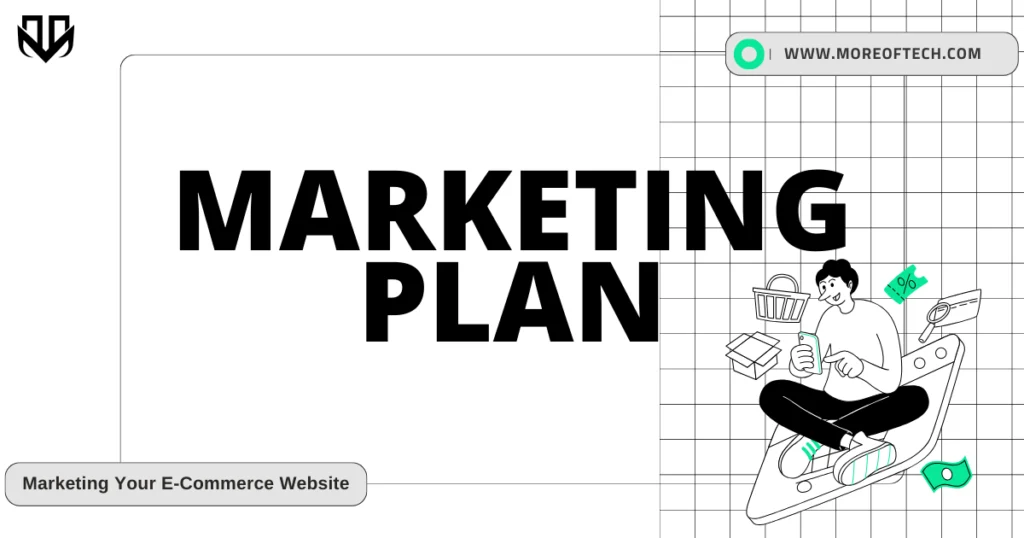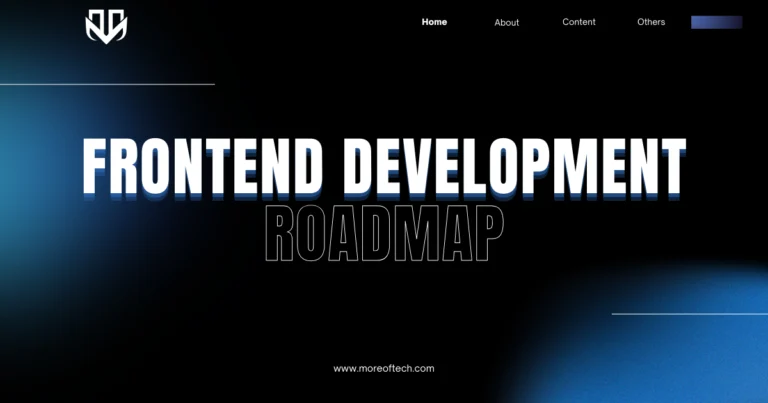E-Commerce Website: How to Build One from Scratch
The digital marketplace has changed how businesses connect with customers. An e-commerce website opens doors to a global market for entrepreneurs. The International Trade Administration says B2C e-commerce will hit $5.5 trillion by 2027, making online shopping key.
Starting an e-commerce site isn’t just for big companies. Small businesses and solo entrepreneurs can now compete with big names. With tools like Shopify, Wix, and Hostinger, starting an online business is easier and cheaper.
Your journey into the digital world starts with understanding its potential. E-commerce lets you reach customers anytime, without the costs of physical stores. Whether you sell handmade items or digital products, an e-commerce site can change your business.
This guide will help you create a successful online shopping site. You’ll learn how to pick the right platform and design a user-friendly site. You’ll see how to build a digital storefront that draws in and keeps customers in a competitive online market.
Table of Contents
Understanding E-Commerce Website Fundamentals
Your virtual storefront is the core of your online retail plan. Electronic commerce has changed how businesses meet customers. It offers new chances for growth and interaction.
Today’s electronic commerce includes many business types. Knowing these helps entrepreneurs make good online retail plans.
E-Commerce Business Models
- B2C (Business-to-Consumer): Direct sales to end consumers
- B2B (Business-to-Business): Transactions between companies
- C2C (Consumer-to-Consumer): Platforms like eBay enabling peer transactions
- Subscription Services: Recurring product delivery models
Benefits of Online Retail Presence
Your online store has big pluses over old-fashioned shops:
- It’s open 24/7
- It costs less to start
- You can sell worldwide
- It has flexible sales options
Market Growth and Statistics
The e-commerce world is growing fast. Recent numbers show its huge potential:
| Metric | 2023 Performance | Projection |
|---|---|---|
| Retail E-commerce Sales | 16% of total retail | $5.5 trillion by 2027 |
| Amazon Sales Growth | 11.8% increase | $574.79 billion |
Your online retail plan should use these trends. Focus on making your site user-friendly, offer various sales paths, and be ready to change your approach.
Choosing the Right E-commerce Platform
Choosing the right e-commerce platform is key for web-based transactions and online payments. It affects your digital store’s performance, user experience, and growth.
When picking an e-commerce platform, think about these important factors:
- Pricing and monthly subscription costs
- Payment gateway integration
- Customization options
- Technical support quality
- Scalability for future growth
Top platforms have unique benefits for different businesses:
- Shopify: Great for beginners
- Starts at $29/month
- Over 100 payment gateway integrations
- G2 rating: 4.4
- WooCommerce: Best for WordPress users
- Free plugin
- 6,000+ integrations
- G2 rating: 4.4
- BigCommerce: Good for growing businesses
- Starts at $29/month
- Unlimited products
- G2 rating: 4.2
Your platform should handle web-based transactions well and offer strong online payments. Think about your budget, technical skills, and business goals when choosing.
Essential Components of Website Architecture
Building a strong e-commerce website needs careful planning. It’s all about creating a smooth, user-friendly place for online shopping.
Digital infrastructure is key for e-commerce success. Bad website architecture can raise costs by 20-40% and slow down work by 30-50%.
Payment Gateway Integration
Choosing the right payment gateway is vital for your online store. Your shopping cart software must handle secure, fast transactions. Top e-commerce platforms offer:
- Multiple payment method support
- Secure transaction encryption
- Seamless checkout experiences
- Compatible with major credit cards and digital wallets
Shopping Cart Functionality
A good shopping cart is key to turning visitors into buyers. Your product catalogs should work well with the cart, allowing:
- Easy product addition and removal
- Clear price calculations
- Transparent shipping costs
- Quick checkout processes
Product Catalog Structure
Good product catalogs need a smart structure. Make sure users can find products in three clicks, following best practices.
50% of purchases now happen on mobile devices. This shows the importance of responsive, well-organized product catalogs.
Focus on these key parts to build a strong e-commerce site. It will draw in and keep customers, while avoiding tech issues.
Designing Your Digital Storefront
Creating a compelling virtual storefront is key for success in online shopping. Your digital presence can greatly impact customer engagement. In just 50 milliseconds, visitors decide if they’ll stay or leave your website. This shows how important every visual element is in turning casual browsers into committed buyers.
When designing your online shopping platform, consider these critical design principles:
- Create a clean, intuitive navigation system
- Use high-quality product images that capture customer attention
- Implement consistent branding across all pages
- Ensure mobile responsiveness for seamless experiences
Visual hierarchy matters significantly in your virtual storefront. Research shows that 94% of first impressions are design-related. Your website should guide customers effortlessly through their purchasing journey. This reduces cognitive load and makes decision-making smoother.
“Design is not just what it looks like and feels like. Design is how it works.” – Steve Jobs
Key design strategies for your online shopping platform include:
- Use psychological design principles to influence customer decisions
- Incorporate trust indicators like security certifications
- Optimize page load speeds
- Provide clear contact information
Remember, a well-structured digital storefront isn’t just about aesthetics. It’s about creating an intuitive, trustworthy environment. This environment converts visitors into loyal customers.
Setting Up Product Pages and Categories
Creating great product catalogs is key to success online. Your store’s success depends on how you show and organize your products. This makes it easy for customers to find what they need.
Product Photography Guidelines
Good photos are crucial. Here’s how to take great ones:
- Use high-resolution images with clean backgrounds
- Capture multiple angles of each product
- Include zoom functionality for detailed views
- Ensure consistent lighting and color representation
Writing Compelling Product Descriptions
Your product descriptions should be clear and engaging. Remember to:
- Highlight unique product features
- Address potential customer pain points
- Use conversational language
- Incorporate relevant keywords naturally
Pricing Strategy Implementation
Good pricing is vital for success online. Here are some tips:
- Competitive pricing based on market research
- Transparent pricing with no hidden fees
- Volume discounts or bundling options
- Dynamic pricing models
Research shows 57% of visitors spend most time on product pages. Make sure your most important info is easy to see and grab attention.
Tip: A well-structured product catalog can increase user engagement and conversion rates significantly.
Implementing Security and Payment Solutions

When you’re setting up an e-commerce site, picking the right payment solutions is key. Your payment strategy affects how much customers trust you and your business’s success.
Here are some important things to think about when choosing a payment gateway:
- How easy it is to integrate with your e-commerce platform
- The security it offers
- If it follows PCI-DSS standards
- The fees for transactions
Platforms like Shopify and Wix make it easy to handle payments. They offer many payment choices. Shopify, for example, supports over 100 payment methods and keeps transactions safe.
When looking at payment solutions, focus on these important points:
- The security of transactions
- How well it detects fraud
- If it supports different payment methods
- If it works with mobile payments
Businesses worldwide should think about adding options like PayPal. This helps reach customers who don’t use traditional credit cards. Flexible payment options can really help grow your customer base.
Also, make sure the checkout process is easy. Aim for a one-page checkout to keep customers from leaving. Your goal is to make transactions smooth and secure, building trust with your customers.
Optimizing for Mobile Commerce
Mobile devices have changed how we shop online. Now, 60% of all online buys are made on phones. It’s key to make shopping on mobile easy and smooth.
Mobile shopping needs smart strategies to grab and keep customers’ interest. With more people buying on their phones, making your site mobile-friendly is a must.
Responsive Design Principles
Responsive design makes your site work well on all devices. The main ideas are:
- Fluid grid layouts
- Flexible image scaling
- Adaptive typography
- Touch-friendly navigation
Mobile User Experience Best Practices
For a great mobile shopping experience, focus on these:
- Simplify navigation menus
- Use large, tappable buttons
- Minimize form fields
- Implement quick load times
Speed Optimization Techniques
Mobile users want fast sites. Use these tips to speed up your site:
| Technique | Impact |
|---|---|
| Image compression | Reduces load time |
| Browser caching | Improves return visit speed |
| Minimize redirects | Reduces page load delay |
Mastering mobile commerce is no longer optional—it’s essential for survival in the digital marketplace.
Marketing Your E-Commerce Website

Starting a digital marketplace needs a strong marketing plan. It must grab attention in the busy online world. Your site must be promoted well to draw in customers.
Important marketing tactics for your online store are:
- Search Engine Optimization (SEO)
- Social Media Marketing
- Paid Advertising
- Email Campaigns
- Influencer Partnerships
Digital marketing has great tools to increase your site’s visibility. PPC advertising gives an $11 return for every $1 spent. This makes it a good choice for new digital marketplace owners.
| Marketing Channel | Effectiveness | Potential Impact |
|---|---|---|
| Social Media Marketing | 85% effectiveness | Brand Awareness |
| Email Marketing | High conversion rates | Customer Retention |
| Influencer Partnerships | 69% use TikTok | Targeted Reach |
Think about using live chat and loyalty programs to engage customers. These can make users happy and bring them back to your site.
Also, 70.19% of carts are left behind, so make plans to win them back. Use SMS, emails, and smart ads to turn potential lost sales into real ones.
Analyzing and Improving Website Performance
Running a successful e-commerce website needs constant checking and making it better. Your website’s speed is key to keeping users happy and boosting sales. Even a tiny delay can hurt your online business a lot.
- Page load speed
- Conversion rates
- User engagement metrics
- Mobile responsiveness
Studies show how important speed is for online shopping. A one-second delay can cut conversions by 7%. Here are some key performance points:
- Loading time under 2 seconds: Best for sales
- Loading time over 3 seconds: Big drop in user interest
- Mobile load time: Very important for over 50% of online shoppers
“Speed is the silent killer of conversion rates in e-commerce.” – Digital Performance Expert
Here are some tips to make your e-commerce site faster:
- Use content delivery networks (CDNs)
- Make images smaller
- Reduce third-party scripts
- Enable browser caching
- Use GZIP and Brotli compression
Test your website’s performance often, like weekly or monthly. Use tools like Google PageSpeed Insights to keep checking and improving your site’s speed.
Scaling Your E-Commerce Business
To grow your online store, you need a solid plan and careful steps. As your store gets bigger, you must have strong strategies. These should help your business grow while keeping customers happy.
Scaling your e-commerce business means:
- Using advanced automation technologies
- Improving how things work
- Making decisions based on data
- Adding new products wisely
Managing money is key when you’re growing. Companies aiming for big growth should watch their Customer Lifetime Value (CLV) and Customer Acquisition Cost (CAC). By using data, you can boost sales by 15-20% by knowing what customers want.
Using new tech is important for growth. About 47% of online shops get better with smooth tech integrations. Tools that automate tasks can cut costs by up to 30%, helping your business grow smoothly.
Important strategies for scaling include:
- Make your mobile shopping better
- Build strong customer loyalty programs
- Use advanced analytics for smart choices
- Build a scalable setup
Successful online stores know scaling is more than just making more money. It’s about creating a strong, efficient business that can change with the market. And it’s all about giving customers great value.
Conclusion
Building an e-commerce website is more than just creating an online store. It’s about making a digital experience that connects with your audience. The online shopping world is changing fast, with sales expected to hit $8 trillion by 2027. Your success depends on knowing these trends and using smart strategies to stand out.
Your e-commerce site needs constant improvement to stay ahead. The digital market rewards businesses that are quick to adapt and use data to improve customer experiences. With over five billion internet users, your reach is huge. Make sure your site is easy to use, secure, and offers a personalized shopping experience.
Starting your digital journey means always learning and trying new things. The best e-commerce sites grow and improve over time. Use analytics, keep up with new tech, and always put your customers first. Your dedication to doing things right will be key to your success.
The future of retail is online, and your e-commerce site is your entry to the world. Begin small, dream big, and keep innovating.







